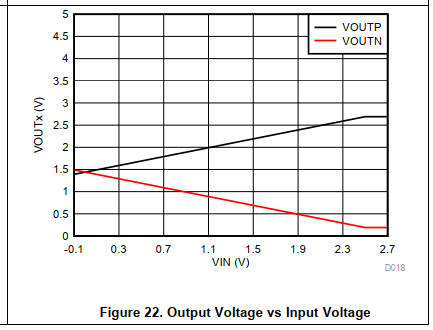Hi Team,
My customer is looking at the datasheet of the device AMC1311, and trying to understand the input vs. output characteristics.In Figure 1 on the datasheet, it shows that when VIN = 0, then VOUTP = VOUTN = 0. However, in Figure 51, it shows that when VIN = 0, then VOUTN is 1 V greater than VOUTP. Which one is correct?
Regards,
Renan


